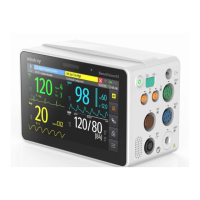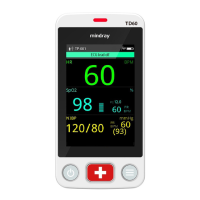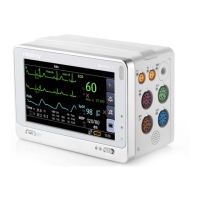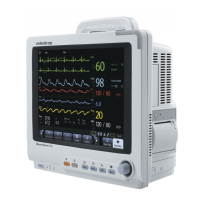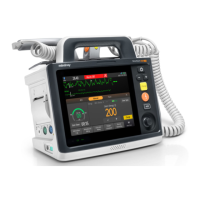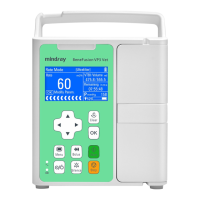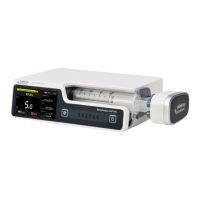BeneVision N Series Patient Monitor Operator’s Manual 21 - 1
21 Monitoring Impedance Cardiography (ICG)
21.1 ICG Introduction
Impedance cardiography (ICG) measures a patient’s hemodynamic status using a safe, non-invasive method
based on thoracic electrical bioimpedance (TEB) technology. ICG uses four pairs of sensors to transmit a small
electrical signal through the thorax. As velocity and volume of blood in the aorta change, the ICG measures the
changes in impedance from systole to diastole to calculate hemodynamic parameters.
Apply ICG monitoring only to patients above the age of 13 years, with weight greater than 34 kg, and taller than
130 cm..
21.2 ICG Safety Information
• Before measuring patients with pacemakers, ensure that the function of the pacemaker cannot be
influenced by the measuring current used for impedance cardiography. In the case of minute
ventilation pacemakers the use of the ICG device is not allowed if the minute ventilation function of
the pacemaker is activated.
• Do not perform ICG monitoring during operation on the opened thorax, since the current
distribution can be distorted and can lead to inaccuracy.
• The ICG module is not intended to be used while exposing the patient to high frequency current.
• Simultaneous use of high frequency electrosurgical equipment (ESU) during ICG monitoring may
result in burns at the stimulation site and can also adversely affect measurement accuracy. Make
sure the ESU return electrode is properly applied to the patient.
• During ICG monitoring, make sure that the conductive paste on the ICG sensors never come into
contact with other conductive parts.
(1) ICG menu hard key (2) Check sensor hard key
(3) Module status indicator (4) ICG patient cable connector
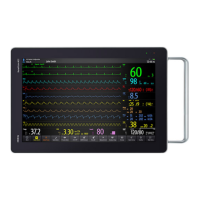
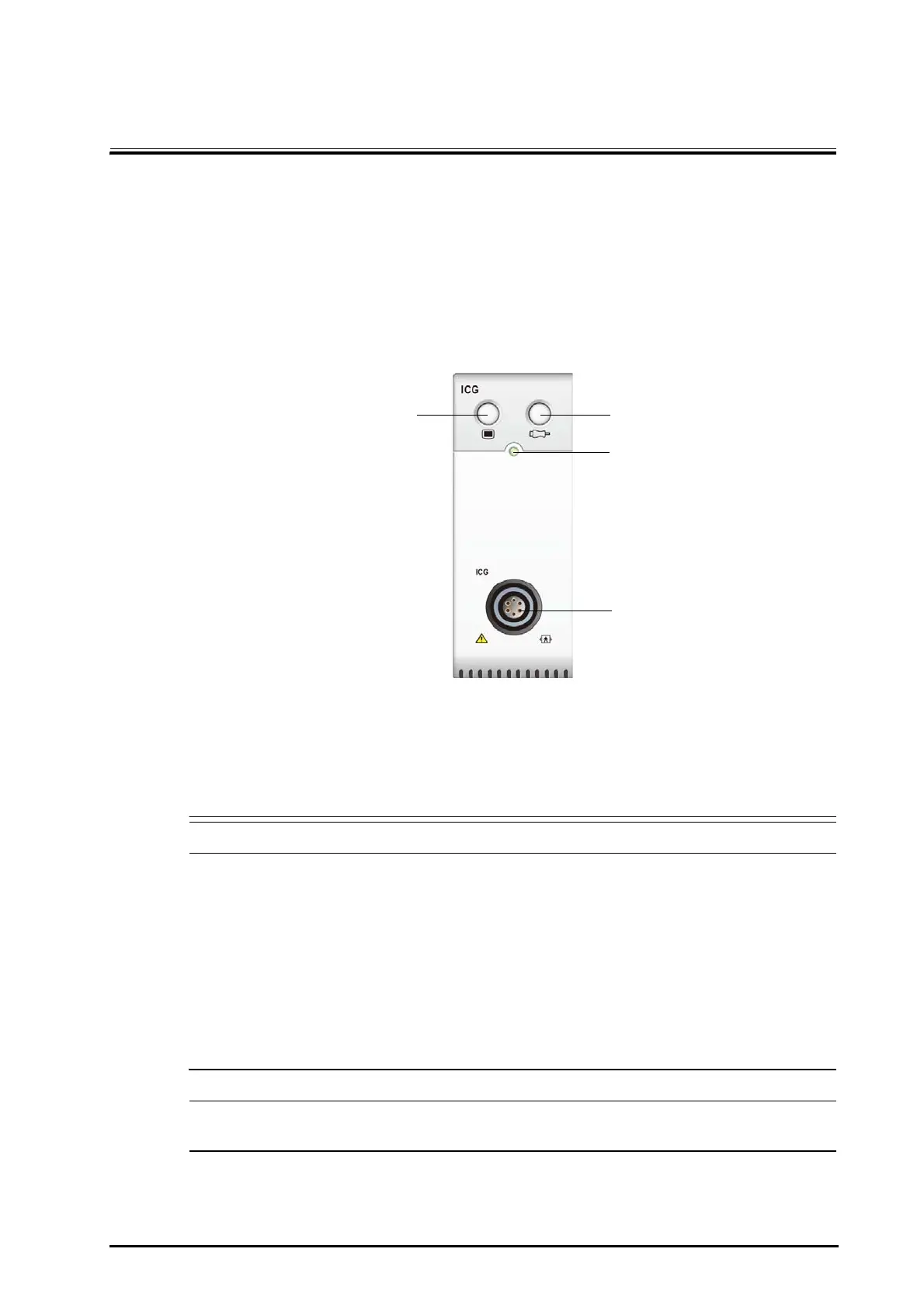